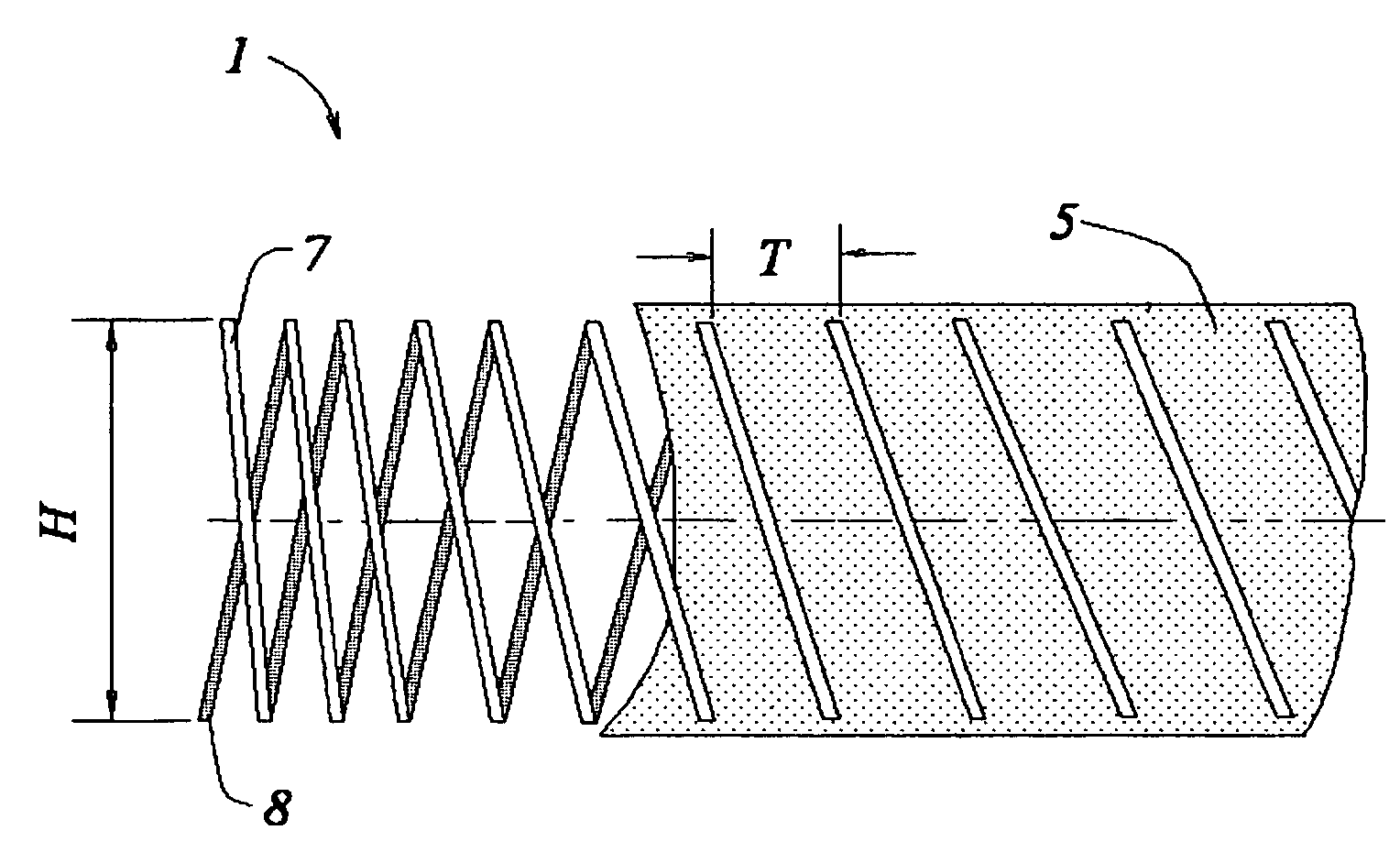Distributed impedance sensor
a technology of impedance sensor and impedance sensor, which is applied in the field of sensors, can solve the problems of limited sensitivity, limited resolution, and higher electronics cost, and achieve the effect of improving the sensor performan
- Summary
- Abstract
- Description
- Claims
- Application Information
AI Technical Summary
Benefits of technology
Problems solved by technology
Method used
Image
Examples
Embodiment Construction
[0036]Prior art non-contact sensors using an electromagnetic field to determine fluid level or the position of a conductive or dielectric target have suffered from high manufacturing cost or low performance. The present invention overcomes these problems by utilizing a novel set of technical advancements that can be used together or independently. A first embodiment of the present invention is shown in FIG. 1, in which two conductors 2, 3, are shaped as a double helix, also called a bifilar helix. This provides an improvement over the well known configuration of interdigital combs of prior art that is commonly used in capacitive sensors. In prior art interdigital comb configurations, it is desirable to maximize the starting capacitance between the two (or more) conductor plates that form the capacitance. The starting capacitance is maximized by making the areas of the plates as large as is practical for a given sensor size. The plate size, and capacitance, is maximized by reducing t...
PUM
 Login to View More
Login to View More Abstract
Description
Claims
Application Information
 Login to View More
Login to View More - R&D
- Intellectual Property
- Life Sciences
- Materials
- Tech Scout
- Unparalleled Data Quality
- Higher Quality Content
- 60% Fewer Hallucinations
Browse by: Latest US Patents, China's latest patents, Technical Efficacy Thesaurus, Application Domain, Technology Topic, Popular Technical Reports.
© 2025 PatSnap. All rights reserved.Legal|Privacy policy|Modern Slavery Act Transparency Statement|Sitemap|About US| Contact US: help@patsnap.com



